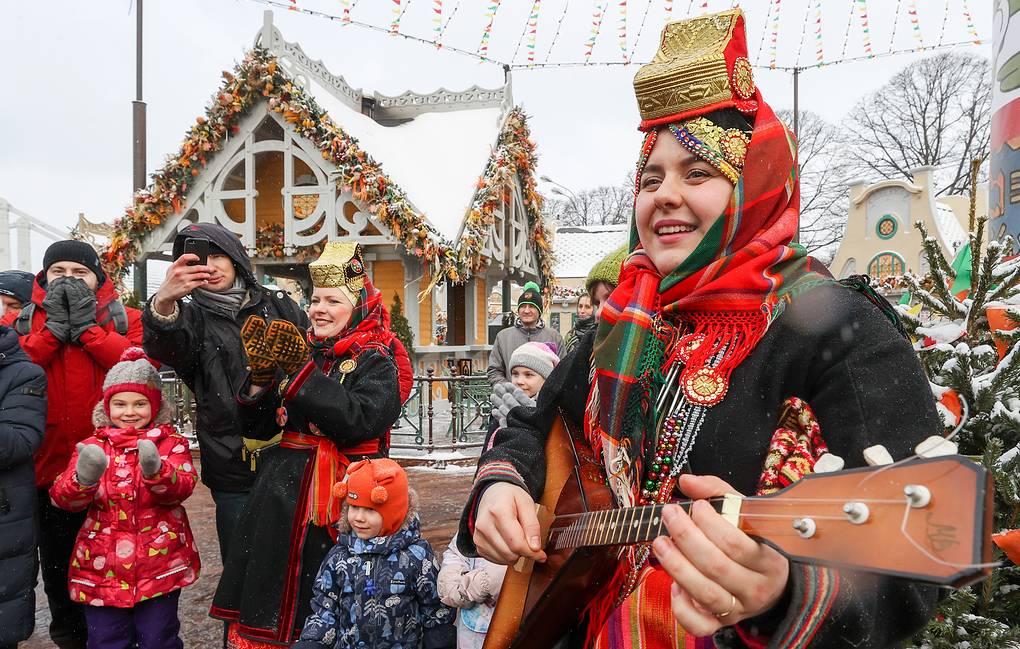FACTBOX: Maslenitsa or pancake week celebrations in Russia

MOSCOW, February 20. /TASS/. On February 20, 2023, Russia starts to celebrate Maslenitsa, a holiday symbolizing the farewell to winter and the welcoming of spring. It lasts seven days, begins 55 days before Easter and ends before Great Lent. In some Western countries, the equivalent of Russian Maslenitsa is Carnival (from lat. carne levare, "to remove, to give up meat").
History of the holiday
According to many ethnographers, Maslenitsa originates from a pagan Slavic feast of farewell to winter, which fell in the second half of February - the first half of March. The date was tied to the day of the vernal equinox and celebrated for a fortnight, starting seven days before the solstice (March 20-21 in the modern calendar) and ending seven days after the solstice. The festival of the vernal equinox essentially marked the coming of a new astronomical year for the Slavs.
Over time, the duration of the celebration was shortened to seven days, which after the Christianization of Russia began to precede Great Lent. The first description of Maslenitsa customs dates back to the 16th century.
The name of the holiday comes from the custom of preparing a variety of dishes on these days using cottage cheese, sour cream, cream, butter, eggs, fish and other animal products, excluding, according to church canons, meat. The tradition of abundant feasting was primarily linked to the rituals of the Slavic feats of the vernal equinox and, after the adoption of Christianity, to the long restrictions to come. Unlike the folk tradition, in Orthodoxy the week before Lent is not a celebration, it is reserved for the faithful to prepare for penitence and strict abstinence.
Symbols of Maslenitsa
The main dish during the holiday is pancakes. According to a popular belief, the more pancakes you eat during Maslenitsa, the happier and wealthier the year will be. For the eastern Slavs, the flatbread symbolized the sun. Maslenitsa was celebrated with folk festivals, games, mountain rides, etc. the main attribute of the holiday was Maslenitsa Scarecrow, a symbolic representation of winter and death. It was traditionally made during the first days of the Cheesefare week of straw or wood in the form of a female (less often - male) figure and dressed in bright clothes. During the days of the holiday, the scarecrow was placed on a snow hill or on a playground, given a sleigh ride, and at the end of the week it was burnt in a bonfire or buried, bidding farewell to winter in this way.
Maslenitsa in Russia
After the Revolution of 1917 and the Bolsheviks coming to power, Maslenitsa, like many other holidays was considered a bourgeois relic. However, it was not officially banned because it was not a religious holiday, remaining essentially pagan. The tradition was revived in the 1960s, with the actual celebration, called "farewell to Russian Winter", usually taking place during the last days of Maslenitsa. At that time, cultural events, fairs with pancakes and treats, and snow fortresses for children were arranged in some parks and squares.
The first major festival Shirokaya Maslenitsa took place in Moscow on March 11-17, 2002. It was organized by the Moscow government on February 19, 2002 to attract tourists. Since then, similar festivals have been held annually in Moscow and other Russian cities. The center of the festivities is the capital’s parks, where fairs, concerts of folk groups, games and competitions take place.
Photo by Sergei Karpukhin





